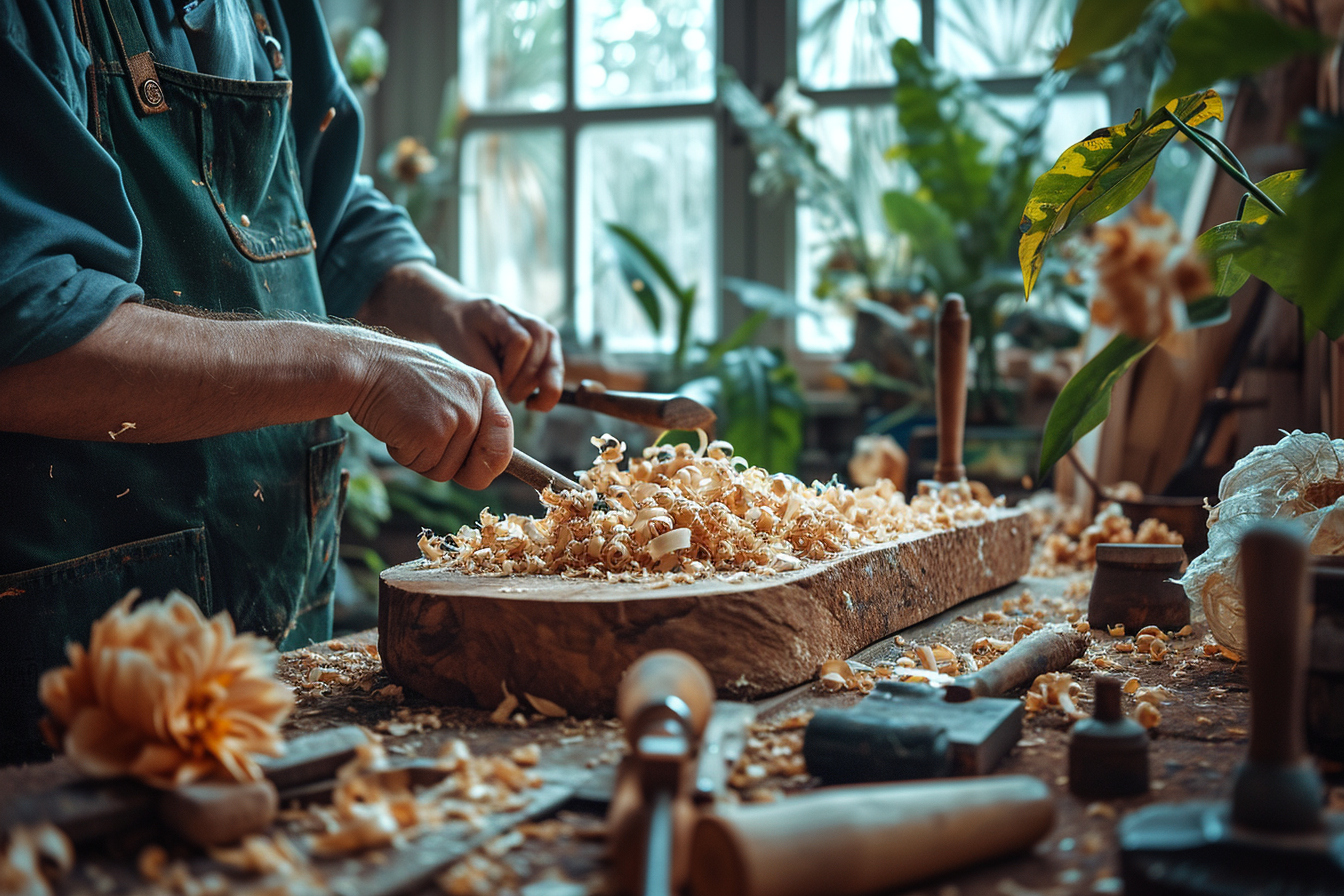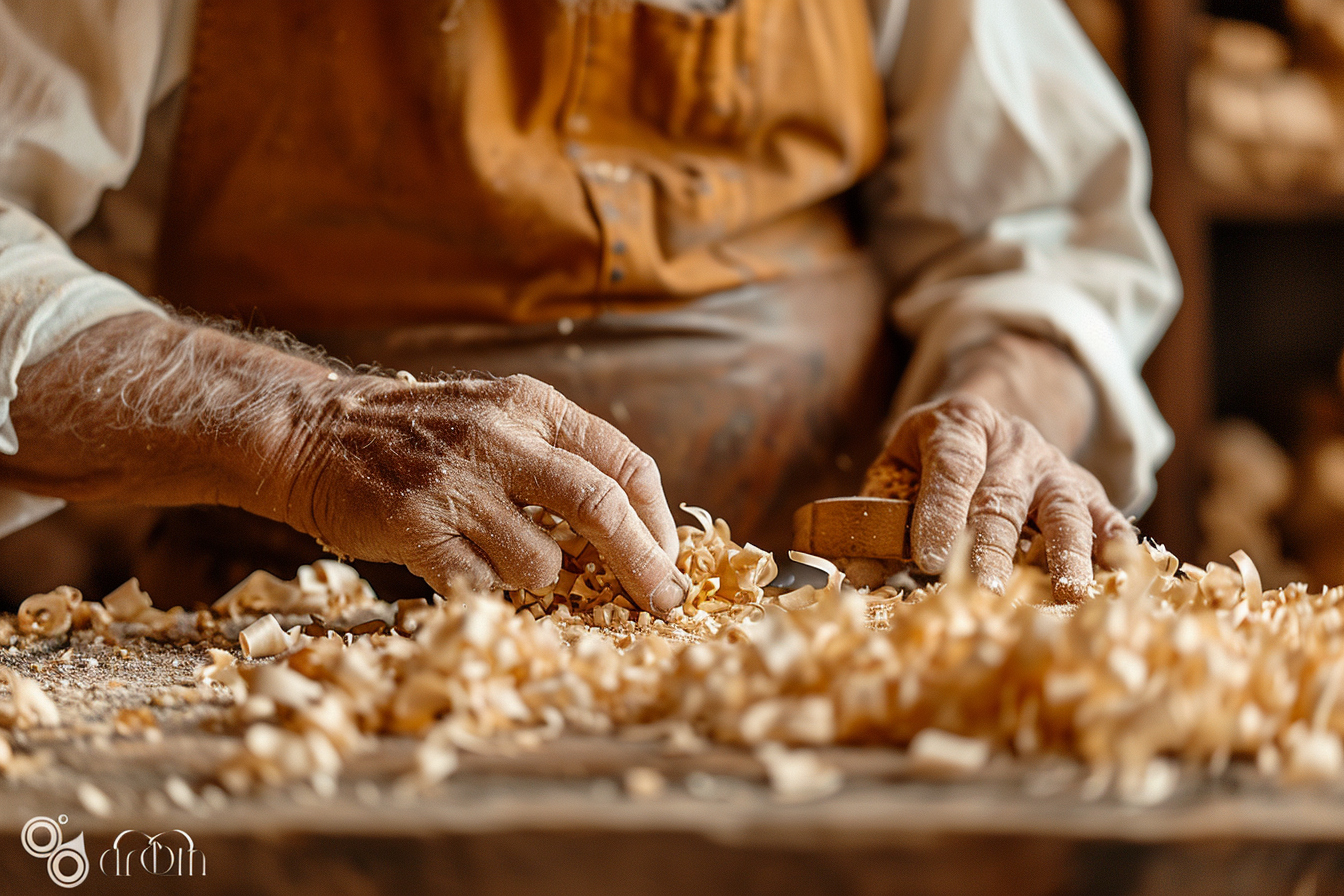The journey of mastering beech wood sculpture is both a profound and enriching experience. Beech wood is a versatile material revered for its fine grain, smooth texture, and malleable yet stable nature. Ideal for detailed work, beech wood offers both beginner and expert sculptors a medium through which they can express their creativity and craftsmanship.
Understanding beech wood
Before delving into the art of sculpting, it is essential to understand the characteristics that make beech wood unique. This hardwood is known for its pale cream color, sometimes with a pink or brown hue. It is characterized by its straight grain and even texture, which promotes uniform carving. Beech’s notable properties include its resistance to abrasion and its ability to bend under steam, making it a preferred choice among many sculptors.
Preparing the sculptor’s toolkit
Embarking on the path to becoming a proficient wood sculptor requires assembling a set of specialized tools. These tools will serve as extensions of the sculptor’s hands, making it crucial to understand their use and care.
Essential sculpting tools
Acquiring the right tools is paramount for a sculptor. A basic toolkit for beech wood sculpture includes:
- Gouges: These are curved tools utilized for scooping out wood. They come in various shapes and sizes, from flat to deep curve (spoon gouge).
- Chisels: These are flat-edged tools employed for making straight cuts. They can be used to shave, pare, and chop the wood.
- Mallets: Mallets are used to apply controlled force to chisels and gouges, facilitating the carving process.
- Knives: A variety of specialized knives may be necessary for detailed work or finer cuts.
- Rasps and Files: These are employed for refining the sculpture and adding texture.
- Sandpaper: Sandpaper with various grits is essential for smoothing and finishing the sculpture.
Tool maintenance
Maintaining these tools is as crucial as their correct use. Regular sharpening is necessary to ensure precision and ease in sculpting. Storing tools properly can prevent damage, rust, and dullness, preserving their condition for years.
Embracing the techniques of sculpture
Beech wood sculpture is both an art and a science, requiring the sculptor to understand and practice numerous techniques. Through these techniques, a simple piece of beech wood can be transformed into a complex, lifelike form.
Carving techniques
Relief Carving: This involves carving figures that project from a flat background. The techniques vary from low (bas) to high relief, depending on the extent of projection.
In the Round Carving: A technique where the sculpted piece is fully three-dimensional and can be viewed from any angle.
Chip Carving: A method involving the removal of small chips of wood, often used to create intricate patterns or designs.
Sculpting methods
- Subtractive Method: This is the classical approach where the sculptor removes material to reveal the form within the wood.
- Additive Method: Occasionally, sculptors might add pieces of wood to their sculpture to achieve the desired form or complexity.
- Modeling: Before carving, sculptors often model their intended design in clay or another malleable material to serve as a reference throughout the sculpting process.
The sculptor’s creative process
Sculpting is not merely about removing wood but understanding deeply the process of bringing an idea to tangible form. The creative process is integral to the discipline of beech wood sculpture.
Conceptualization and design
All sculptures begin with a concept. This idea may evolve from organic shapes in nature, figures from mythology, or abstract designs. Crafting a detailed design or sketch before beginning to carve can significantly improve the final outcome.
Wood selection
Choosing the right piece of beech wood is a skill within itself. Sculptors must look for wood free of defects and with grain patterns that complement the intended design.
Wood preparation
Preparing the wood typically involves cutting it to a workable size and sometimes steaming it for pliability. Only then can the wood be properly mounted on a workbench, ready for the hands of the sculptor.
Advanced techniques and finishings
As sculptors’ abilities grow, so does their aptitude for integrating advanced techniques and finishings into their repertoire.
Advanced carving techniques
Incorporating techniques like undercutting, where the wood is scooped out beneath the surface, can create shadows and increase the realism of a piece. Texturing is another advanced technique that adds depth and dimension to the sculpture.
Finishing techniques
Beyond the shape and form, adding finishings to a sculpture can elevate its beauty.
- Sanding: This is the process of smoothing the sculpture with progressively finer grits of sandpaper until the desired finish is achieved.
- Staining: Stains can be applied to enhance or alter the color, emphasizing the natural grain of the beech wood.
- Sealing: A variety of sealants, from waxes to lacquers, can protect the final sculpture and give it a polished appearance.
The philosophical aspect of sculpting
A connection to the material and an understanding of its limitations and potential is fundamental to mastery. Each piece of beech wood holds a story, and the sculptor must learn to listen. Patience, respect for the material, and a thoughtful approach to design are integral to this philosophy.
Continuous learning and exploration
The art of beech wood sculpture is a lifetime journey of learning. Each project offers unique challenges and opportunities to refine one’s skills.
Embracing mistakes
Mistakes are inevitable and often provide powerful lessons. A skilled sculptor learns to adapt and, when possible, incorporate or work around errors, turning them into unexpected aspects of the piece.
The sculptor’s mindset
Developing the right mindset is crucial. Patience, dedication, and the willingness to push boundaries define the philosophy of mastery in this art form.
The role of community and sharing knowledge
Joining a community of sculptors can provide invaluable support and enrichment. Through workshops, exhibitions, and forums, sculptors share techniques, critique, and inspire one another.
Mentorship and apprenticeship
Seeking mentorship from seasoned sculptors can drastically accelerate the learning curve. Apprenticeships offer practical, hands-on experience that is critical to understanding the nuanced dynamics of beech wood sculpting.
The digital era of learning
With the advent of online platforms, learning resources have expanded. From video tutorials to online critiques, digital technology offers alternative avenues for sculptors to sharpen their craft.
Sustainability and the environment

Working with wood comes with a responsibility to the environment. Sourcing beech wood from sustainable forests, understanding its life cycle, and even partaking in replanting efforts can ensure that the craft continues for generations without harming the ecosystem.
Ethical practices in sculpting
It is important to use beech wood judiciously and minimize waste. By optimizing designs to use the wood efficiently and recycling offcuts into smaller projects or for practice, sculptors can embrace ethical practices.
Final thought

Beech wood sculpture is an expansive art form that stretches the boundaries of creativity and skill. The comprehensive journey from beginner to master sculptor is one that is deeply personal, infinitely complex, and endlessly rewarding. With each chisel stroke and carefully crafted contour, the sculptor not only transforms a piece of wood but also undergoes a transformation themselves, learning, evolving, and eventually mastering the art of expression through the medium of beech wood.









